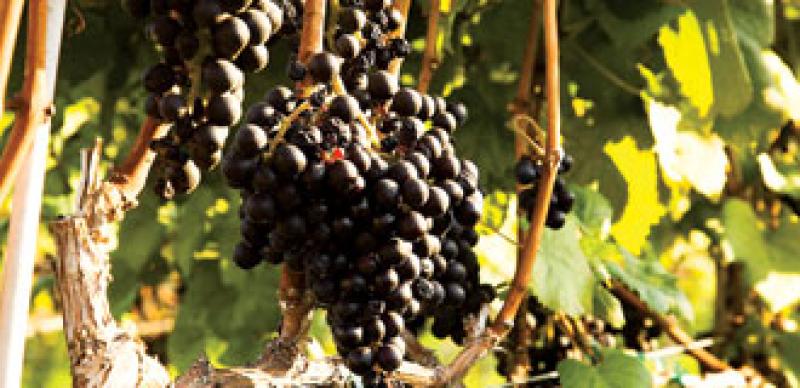Napa and Sonoma lure the lion’s share of traveling oenophiles (including those drooling Sideways fans) searching for lip-smacking libations. But with its rolling meadows, clapboard farmhouses and pockets of broccoli-green woodlands, northern Virginia is a palate-cleansing alternative with an intriguing bouquet.
Although matching California quality here is about as likely as an Uncle Sam “Champagne” gaining French market share, this charming enclave of 100 boutique wineries encourages leisurely exploration. Think Napa 30 years ago, with a shot of fall countryside bathed in golden sunlight.
Wending 50 miles northwest from D.C., with a grumbling friend as designated driver, I make first for Loudoun County’s Breaux Vineyards. The winery, encircled by gentle hills combed with manicured vines, has a grand approach that leads to a brick villa that could have been transported direct from Tuscany.
Greeted by cheery staffers, I join a 30-minute group tour that whips me behind the scenes, dispelling fantasies of wooden vats and foot-pressed grapes with the reality of whitewashed concrete rooms and gleaming steel tanks. It’s not exactly medieval Burgundy.
Since the tasting room is the main attraction, I’m soon sipping a light Merlot that’s a local favorite. My unsophisticated palate prefers the punchier Italian-style Nebbiolo, and after a few swigs I compliment its “dark cherry notes” as if I’m a seasoned sommelier. Cumulative sampling brings out everyone’s inner wine snob.
Next I head to Hillsborough Vineyards, where a bucolic estate surrounds a converted stone barn, evoking rural Provence. The ambience isn’t coincidental: There’s a French-blend focus here. Chatting with twinkle-eyed owner Bora Baki, I learn that Virginia’s commercial wine sector, launched just 25 years ago, is typically a labor of love rather than a passport to the high life. “Ask any owner, and they’ll tell you about the money and hard work involved,” he says. I express my sympathy by hitting the bottle. A classy Bordeaux blend is light and fruity, while the Bloodstone seems peppery and full-bodied. Chuckling at my weedy characterization, Baki simply describes it as having “big boobs and long legs.”
With the sun sinking to a purplish glow, I reach Chrysalis Vineyards, a laid-back farm-style venue, in time for last orders. I skip the tour, opting for the busy sampling bar. The rhubarby Viognier is popular, but it’s not the only quaff worth trying. European vines are a constant challenge for Virginia growers, and the Chrysalis answer is the Norton, an indigenous grape. The Norton Estate Bottled is nearly black currant in color and has a rich, almost chocolaty taste — followed by a slight bitterness that some find testing.
Not quite ready for a full bottle, I hit the sunset-hued patio with a sweet dessert wine. Several chatty visitors are rolling out picnic blankets for some al fresco sipping on the grass. Virginia’s rustic wine country may never reach California’s glitzy heights, but its distinctive down-home flavor makes it well worth the trip.
THE ESSENTIALS
Stay at Middleburg’s Red Fox Inn (redfox.com), an 18th-century coaching tavern with antique-lined rooms. Eat at Purcellville’s elegant, weekend-only Grandale Farm Restaurant (grandalefarm.com), with its gourmet approach to regional ingredients. Drink at Leesburg’s Vintage 50 (vintage50.com), a contemporary microbrewery with ten proprietary beers and more than 200 wines. Don’t miss September’s old-school Bluemont Fair (bluemontfair.com), a two-day celebration of local food, wine and entertainment.






